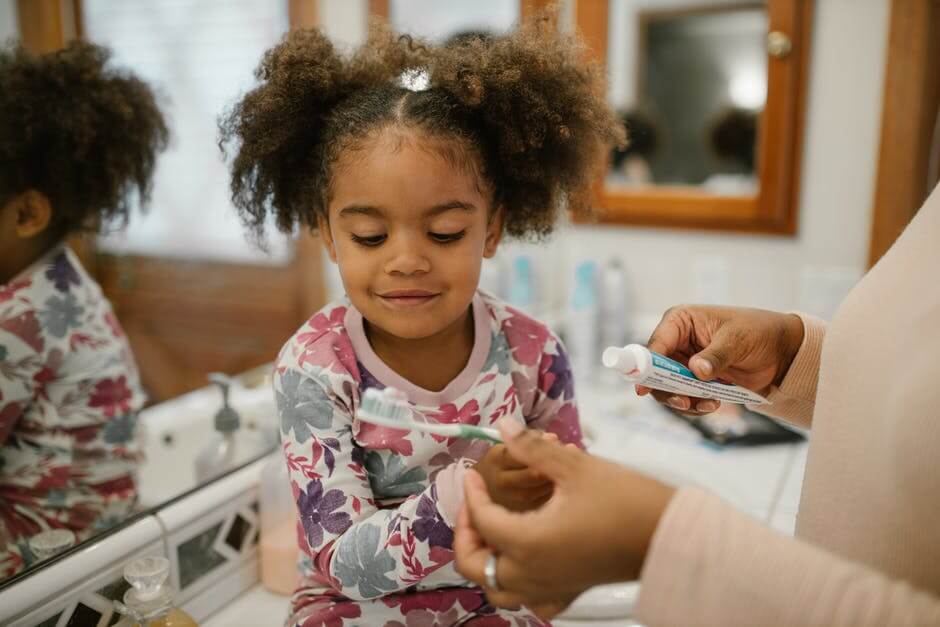Toddlers can develop gingivitis, too. Find out about gingivitis in toddlers and why it’s important to visit your dentist if you notice any symptoms.
Do you notice your toddler’s gums bleeding while you’re brushing their teeth?
If so, they may have early-stage gingivitis. Gingivitis is one of the most common dental problems in young children, but it’s also prevalent in toddlers.
Most cases of gingivitis in toddlers are mild. But left untreated, gingivitis can cause severe issues for young children as they get older.
Learn more about gingivitis in toddlers and why you should visit your local dental clinic when you notice any signs.
Gingivitis Causes and Risk Factors
Many of the causes and risk factors of gingivitis are preventable with lifestyle changes. Common causes of gingivitis in toddlers include:
- Poor oral hygiene
- Plaque buildup
- Vitamin C deficiency
- Teeth grinding
- Mouth breathing
- Medical conditions
- Poor nutrition
Healthy eating is essential for your toddler’s growth and development. They need protein, vitamins, and minerals to build strong teeth and prevent tooth decay and gum disease.
Poor nutrition makes it difficult for your toddler to fight off infections, putting them at a higher risk of developing gingivitis.
Gingivitis Symptoms
The good news is that gingivitis is often easy to identify. Symptoms of gingivitis in toddlers include:
- Bleeding gums
- Gum swelling
- Dark red gums
- Tender or puffy gums
- Bleeding gums between brushing
- Bad breath
Just like adults, toddlers can have bad breath. However, if the bad breath (halitosis) won’t go away even after teeth brushing, it is often an indication of poor oral hygiene.
When you notice one or more of the above symptoms, it is essential to schedule a dentist appointment. They can make a professional assessment and guide you through a treatment plan.
Gingivitis Treatment
The good news is that gingivitis is a reversible form of gum disease. Your dentist is likely to recommend your toddler have professional dental cleaning twice a year.
During these appointments, your dentist will examine your toddler’s mouth and clean their teeth using small cleaning instruments. These instruments will work to remove stubborn plaque that your regular toothbrush can’t.
Of course, you will need to continue to practice good oral hygiene at home with twice-a-day teeth brushing.
If there is no more evidence of gingivitis, your toddler won’t have any further treatment.
However, if gingivitis progresses, it can develop into pediatric periodontal disease. At this point, more treatment will be necessary to stop the disease before it worsens.
Gingivitis Prevention
The best way to prevent gingivitis is through good oral hygiene. The more you encourage good cleaning habits early on, the greater chance of your toddler carrying these habits throughout their life.
There are five key ways to prevent gingivitis in toddlers. Let’s take a look at each.
1. Brush Your Toddler’s Teeth Regularly
Parents should brush their toddler’s teeth until about age six – twice a day, morning and night. The best way to brush your toddler’s teeth is by moving the brush in gentle circles to clean the outer and inner sides of the teeth and gums. Gently brush your toddler’s tongue, too.
You should encourage your toddler to brush without swallowing. There’s no need to rinse with water either. The fluoride toothpaste left behind will protect their teeth.
2. Use Toothbrushes With Soft Bristles
Whatever your child’s age, the toothbrush they use should be soft-bristled. Soft bristles are gentle on the gums.
Hard-bristled toothbrushes can do damage to the enamel and gums. Choose a soft-bristled toothbrush with angled bristles for the most effective clean.
3. Replace Toothbrushes Every Three Months
The Centers for Disease Control and Prevention (CDC) recommends replacing your manual toothpaste every three to four months. If you continue to brush longer than that, the bristles will fray and won’t be as effective at clearing away plaque.
4. Use Toothpaste Containing Fluoride
Fluoride protection against gingivitis and tooth decay is recommended for children and adults. Using fluoride twice a day is one of the most effective ways to prevent gingivitis. But it’s essential to use it correctly, especially in toddlers and infants.
If you have concerns about using fluoride, fluoride-free options are on the market. Just be sure to brush twice a day and make regular visits to the dentist.
5. Brush Teeth After Sugary Snacks and Drinks
You should be limiting the sugary foods your toddler eats to avoid dental decay. But if your toddler does eat food high in sugar, it is recommended that you brush their teeth right away.
Foods high in sugar can attack the enamel and lead to tooth decay and gum disease.
When You Should Visit the Dentist
Because gingivitis usually doesn’t cause pain, many parents opt to delay treatment. But if left untreated, gum disease can cause more serious problems.
If your toddler’s gums are swollen, discolored, and bleed easily, they may have gingivitis, and you should visit your dentist before it worsens.
Other more severe signs include a high fever, pus formation, and red streaks leading from the inflamed area.
If you notice any of these symptoms, call for an emergency consultation as soon as possible.
Gingivitis in Toddlers: What’s Next?
Healthy teeth and gums are vital to your toddler’s oral and general health. Dental care for your toddler starts with cleaning their teeth twice a day.
Unfortunately, gingivitis in toddlers is not uncommon. If you notice bleeding gums, swelling, or discoloration, these are generally the first signs of gingivitis.
As soon as you notice these symptoms, it’s time to visit your local dentist. This can be an anxious time for your toddler, so it pays to choose the right clinic for the job!
We provide comprehensive pediatric dental care at Knoxville Pediatric Dentistry in a warm and friendly environment. Our number one priority is to ease any fears your toddler may have.
Please request an appointment today, and let’s treat gingivitis the right way!

